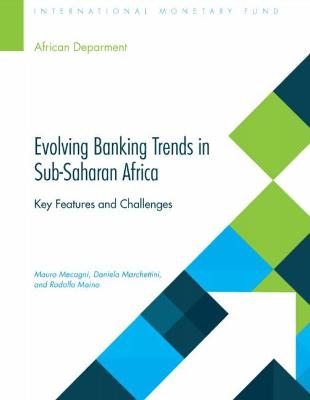Departmental Papers
2 total works
Dollarization: the use of foreign currencies as a medium of exchange, store of value, or unit of account - is a notable feature of financial development under macroeconomically fragile conditions. It has emerged as a key factor explaining vulnerabilities and currency crises, which have long been observed in Latin America, parts of Asia, and Eastern Europe. Dollarization is also present, prominently, in sub-Saharan Africa (SSA) where it remains significant and persistent at over 30 percent rates for both bank loans and depositsalthough it has not increased significantly since 2001. However, progress in reducing dollarization has lagged behind other regions and, in this regard, it is legitimate to ask whether this phenomenon is an important concern in SSA. This study fills a gap in the literature by analysing these issues with specific reference to the SSA region on the basis of the evidence for the past decade.
Evolving Banking Trends in Sub-Saharan Africa
by Mauro Mecagni, Daniela Marchettini, and Rodolfo Maino
Published 30 September 2015
Banking in SSA has undergone very significant changes over the last two decades. Financial liberalization and related reforms, upgrades in institutional and more recently the expansion of cross-border banking activities and the rapid development of Pan-African banking groups are signaling greater financial integration and significant changes in the African banking and financial landscape. Nonetheless, excess liquidity in many countries reflects limited lending opportunities and, despite improvements, asset quality and provisioning remain comparatively low. Dollarization has also been a persistent characteristic in several natural resource-dependent economies. This paper discusses key stylized facts and trends of banking development in SSA, looking at a variety of dimensions such as size, depth, soundness, and efficiency. It also assess the rapid expansion of pan-African banking groups, which have overtaken the role of the European and U.S. banks that had traditionally dominated banking activities in SSA, creating significant cross-border networks and becoming the largest participants in new syndicates and large bilateral loans to finance infrastructure development.

